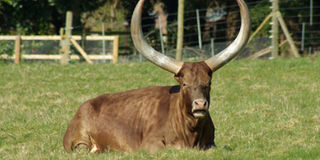Prime
History of the once strong Ankole Kingdom

A phone-enabled software helps farmers to monitor their livestock efficiently. FILE PHOTO
When Chwezi Empire disintegrated in the late 15th century, Ruhinda Rwa Njunaki, the son of Wamala, the last king of the Bachwezi formed Nkore, now Ankole kingdom. The Bahinda clan, who are the rulers of Ankole are descendants of Ruhinda. He is called Ruhinda because he had Ekihinda (a black mark) on his face. Ruhinda’s mother was called Njunaki who was a servant at the King’s palace.
The Chwezi Empire extended to the current Tanzania. That’s why the Bahaya in Tanzania have similar dialects like Runyankole. In 1520 when the King of Bunyoro, Chwamari invaded Ankole and Rwanda, Ntare IV, hid in a forest called Muzaire-Otaakwa in Karagwe.
Like any other kingdom, Ankole society evolved into a system of ranked statuses. Men gave cattle to the king (mugabe) to demonstrate their loyalty and to mark life-cycle changes or victories in cattle raiding. This loyalty was often tested by the king’s demands for cattle or for military service.
In return for homage and military service, a man received protection from the king, both from external enemies and from factional disputes with other cattle owners.
There were cultivators and cattle keepers in this kingdom. However, with change in life styles, those who were traditional cultivators now rear cows and cattle keepers grow crops.
Historically, Nkore was a sovereign entity, but when it was incorporated into modern Uganda in 1901 by the signing of the Ankole Agreement, it became Ankole and the Omugabe became largely a ceremonial position, an administrative position within the British colonial framework. The Engazi was given executive powers and he was the one running the kingdom. This arrangement would sometimes cause friction between the two.
The pre-colonial Ankole was composed of Kashari, Isingiro and part of Rwampara. After this agreement the Chiefdoms of Sheema, Buhweju and Mpororo were added to Ankole. The chiefs of Bujweju were Abariisa, Mpororo was for Bainerukaari and Bainekirenzi, Igara was under Abainemafundo. The colonialists added all these chiefdoms for easy administration.
Ankole has had 23 kings from the time of Ruhinda to Gasyonga II. The kingship was abolished in 1967 by President Milton Obote.




